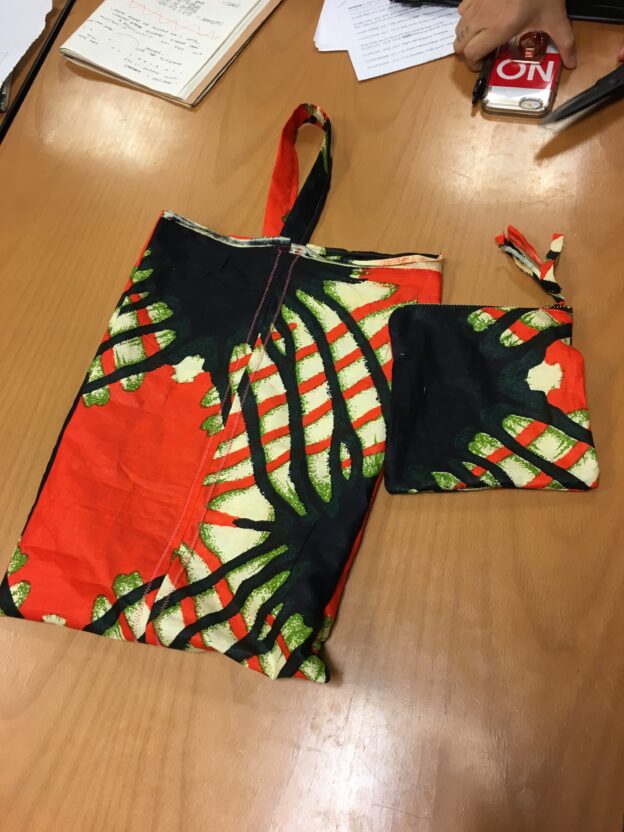Science, Technology, and New Fashion: What is “New” Fashion?
To be argumentative, fashion is never really new, as Sandy Black says herself in the introduction, when she mentions how fashion cycles, or becomes “reborn”; fashion is now what is “new”, but rather the technological advances and scientific advances that make fashion into another reborn state. She states: “The spread of the QR (quick-response) code in advertising is testament to this development, allowing owners of smartphones to quickly connect to product information? (Black 429). With that, I have to say I am impressed by the ICD + Levi’s jacket (http://lab-alpha7.com/?p=1720) where computing and technology mix with the patterns we already know and use, like the classic denim jacket.

What concerns me is of course the nature of wearing technology, as we have discussed before in class, which is brings about a law element: Can such wearable technology with Bluetooth or I-Cloud connections allow the government to access us through such devises? Or can the brand itself, like Levi’s, have access to our personal information that is embedded in the clothing we purchased by this manufacturer? The privacy issue has always been discussed, but as I was reading Black, I also thought about these questions as somewhat ironic because is we are so afraid of people knowing our personal information, then why do we have such advanced cell phones? We literally carry out phones everywhere we go, but we don’t consider it clothing or even an accessory at this point: we see our phones as a part of us.
So then, I dare to ask the question: If our cell phones are technology and we have them on bodies to such a degree that we are “wearing” them, then how come we don’t consider our cell phones as items of clothing? And if they are items of clothing, then could we analyze the trends of what cell phones people use through brand-type, what attachments or accessories we use to decorate or elevate them, and what way in which we “wear” them to make the even more ambiguous statement that cell phones are not just clothing, but they are fashion. Even the fashion empires we know, and love sell I-phone cases with their logos on them which shows that the industry is in some way recognizing how to take a business of technology, like cell phones, and integrate them into the business of fashion. Black uses the example of LED lighting of the 80’s and 90’s to help make my point: “Here, the integration of LED lighting technology into clothing has become the new fashion currency for music artists and celebrities, moving beyond the spectacular theater of the radical fashion catwalks that evolved in the 1980’s and 1990’s (for example from designers such as Issey Miyake, Alexander McQueen…” (Black 431).
In Bradley Quinn’s “Technology and Future Fashion: Body Technology for the Twenty-First Century”, the introduction of the challenge of fibers that have evolved to be wearable, coincides with technology’s advancement to make wearable technology itself more comfortable and less rigid. Although it’s not “wearable technology”, I think of McQueen’s “Savage Beauty” Collection at the MET. The Spring/Summer 2001 VOSS dress, made of razor clam shells, was featured on the runway, as shown here: http://blog.metmuseum.org/alexandermcqueen/dress-voss-2/ and is an example of taking unconventional objects and making them wearable.

Photograph © Sølve Sundsbø / Art + Commerce
Fashion has moved into a new state: Quinn argues that it’s not about being wearable anymore, but it has already gone beyond that to where fibers can show emotional responses to the environment. The earliest introduction of this is seen with “Smart Shirts” developed by Sundaresan Jayaraman who “…engineered a supple textile substrate from a mixture of natural fibers, gossamer wires, and optical fibers…designed specifically to calibrate heart rate, respiration, and body temperature and relate the data to a remote system in real-time for analysis” (Quinn 439). To go against my own argument above, I can see the advantage in using fibers that can sensor danger in two wasy; either a person who is about to come in contact with danger can have wearable technology to signal themselves in that situation (like a car alarm) or for the use of the military to send information or record information secretly. With that, though, comes the same problem of the everyday consumer consenting to allowing information to be recorded or sent from their body to another place, and the transmission and delivery to whatever place that is cannot be guaranteed. There is still the problem of privacy being leaked or technology acting on its own, where the wearable technology becomes a danger in itself (i.e. any Sci-Fi movie where the helpful robots the government gave the people all of a sudden turn against humans etc.). Quinn discusses surveillance as an issue with fibers that have RFID (radio frequency identification) that challenges the idea of ownership of the garment. His issue is that the chip belongs inside the garment, so once it’s purchased by the consumer, who has ownership of the RFID? Who has control over what can tract or monitored?
I think the back and forth pull will always be present in the integration of technology and clothing; ownership, privacy and law are always going to at the forefront of the issue, even if monitoring our heart rate and sending medical information in real-time may save someone, we have to calculate the risk with having such advances to our clothing. What I can admire is the use of technology with fashion, like 3D printing, which has changed the game for what can be designed, and most importantly, wearable and realistic. Only time will tell how far we can take that into our personal lives.
Carolyn J Cei
Original Blog Post: http://www.bonesboudoir.com/the-new-technology-in-new-fashion/





























































